The surface of the Earth refers to the outermost layer of the Earth’s crust. It is where humans reside and carry out their activities. The landmass above sea level is known as the emerged lands, while the underwater areas are called submerged lands, covering 71% of the Earth’s total area.
Contrary to popular belief, geography is not the only field of study dedicated to understanding the Earth’s surface. There are various disciplines that focus on this dimension of the Earth, each with their unique perspectives and approaches.
There are several scientific concepts related to the study of the Earth’s surface. These concepts include cartography, which focuses on the representation of the Earth’s surface on maps; chemistry, which examines the molecular composition of the Earth’s surface; biology, which studies the living things that exist on the Earth’s surface; and geography, which explores the structuring and transformation of the Earth’s surface by human activities, among other possibilities.
But wait, there’s more to learn about the Earth’s surface!
The Earth’s surface is made up of three layers: the lithosphere (the solid part), the atmosphere (the gaseous part), and the hydrosphere (the liquid part). Together, these layers create the conditions for life to exist on the Earth’s surface, which is known as the biosphere.
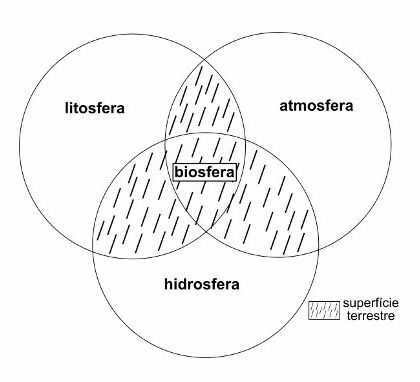
Explanatory diagram of the composition of the Earth’s surface *
Having an understanding of the makeup and processes involved in the formation and transformation of the Earth’s surface is of utmost importance for individuals in the field of geography. This knowledge directly influences the planning and reconstruction of geographical spaces, as well as the study of plants, animals, and other external phenomena.
* Image provided by: VESENTINI, I. W. Geography: a world in transition. São Paulo: Editora Ática, 2012. p.174 [adapted].
Author: Rodolfo Alves Pena
Are you interested in utilizing this text for your own study or learning purposes? Feel free to explore further:
PENA, Rodolfo F. Alves. “The Earth’s Surface Explained”; Brazilian School. Retrieved from: https://brasilescola.uol.com.br/o-que-e/geografia/o-que-e-superficie-terrestre.htm. Accessed on June 28, 2021.
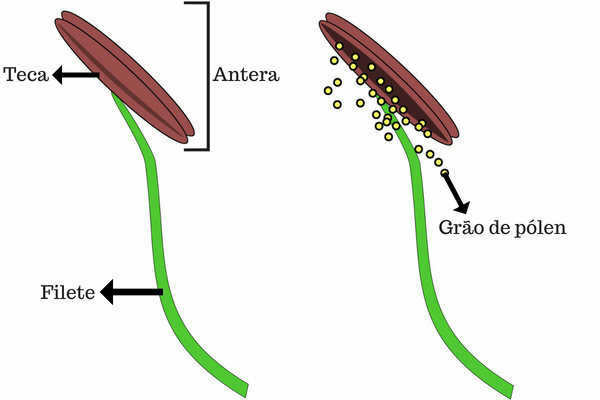
What is androcheu?
An androcheu is a term used to describe the group of stamens, which are the male reproductive organs in a flower.
What is the ABO system?
It is a frequently asked question: What is your blood type? When discussing blood types, we are referring to the ABO system.
As per the theory of evolution, living beings have experienced and continue to experience modifications over a period of time, accompanied by.

Our planet, Earth, possesses a diverse and captivating surface with a combination of majestic mountains and vast bodies of water of varying depths. The terrain of our planet plays a crucial role in shaping human life, as it determines the feasibility of establishing settlements or engaging in various activities in a particular area. Throughout its billions of years of existence, our planet has evolved into an extraordinary landscape that continues to intrigue and challenge mankind.
What is the definition of relief?
Relief encompasses all the variations and irregularities found on the Earth’s crust, regardless of their size, location, or composition. The unevenness of the terrain can be attributed to a multitude of processes, with certain factors leading to the creation of irregularities while others contribute to their disappearance.
Structural relief refers to the variations in the Earth’s surface that are solely dependent on the materials that compose the rocks and their depth underground. Over the past few centuries, human activities have played a significant role in shaping the Earth’s surface. Mining operations and excavations are conducted to extract valuable resources, while at times, elevations are artificially created. Such alterations to the natural terrain are referred to as anthropogenic relief, as they are man-made.
Fascinating fact: When it comes to topography, the Pacific and Atlantic coasts exhibit notable distinctions. The Pacific coastline is characterized by mountainous regions, while the Atlantic coastline is predominantly flat plains.
Visual representation of the terrain
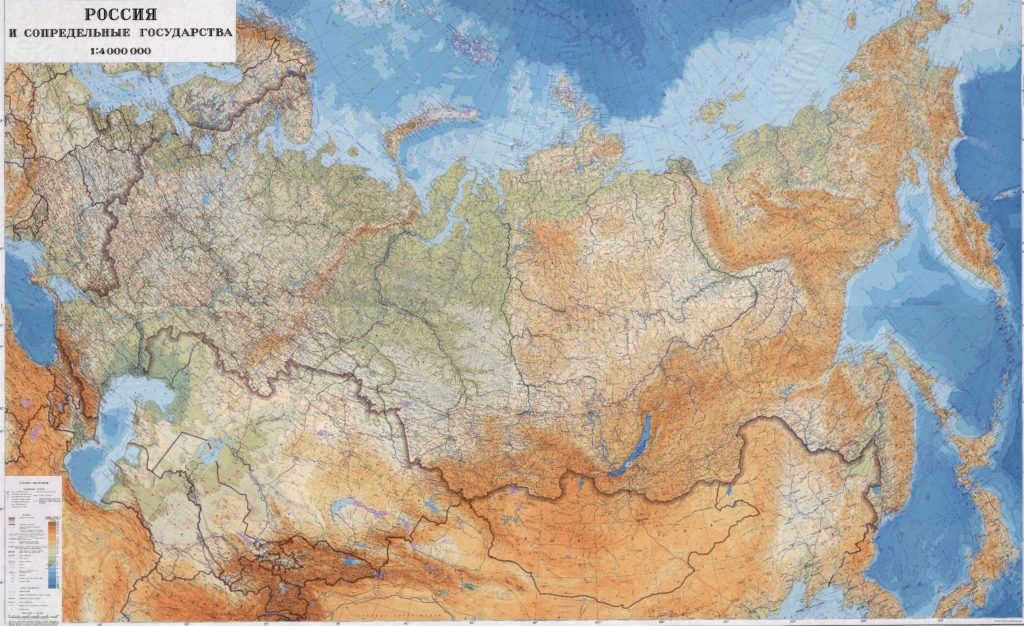
A topographic map is a type of map that illustrates a specific region by visually representing its terrain and various features. It also includes information about vegetation, geodetic points, hydrography, economic and cultural landmarks, roads, and boundaries.
Fascinating fact: The field of study that focuses on creating maps and depicting terrain is known as topography.
Geographical maps can be classified into four categories based on the chosen scale:
- Overview topographic maps are utilized for a general examination of large areas where a detailed representation of the terrain is not necessary. They typically have a scale of 1:200,000 and above.
- Topographic maps are commonly utilized in military operations, aiding in troop management and providing in-depth information about the landscape at a 1:100,000 scale.
- Large-scale topographic maps are employed for thorough examination of the terrain and its characteristics, enabling the determination of distances between specific objects. The scales used range from 1:10,000 to 1:50,000.
- A topographic plan is a highly detailed map of a small area, providing precise indications of the objects situated within it. These plans are typically depicted at a scale of either 1:2000 or 1:5000.
Topographic maps are designed to account for the Earth’s spherical shape, which requires the use of a special coordinate system. When gathering data about the terrain and plotting it on a map, cartographic generalization is often employed. This process involves representing certain areas at different scales on a more general map. For instance, on a map with a scale of 1:20,000, a settlement might be depicted at a scale of 1:5,000 in order to provide more detailed information. Special symbols are frequently utilized for cartographic generalization, with enlarged elements being emphasized with frames.
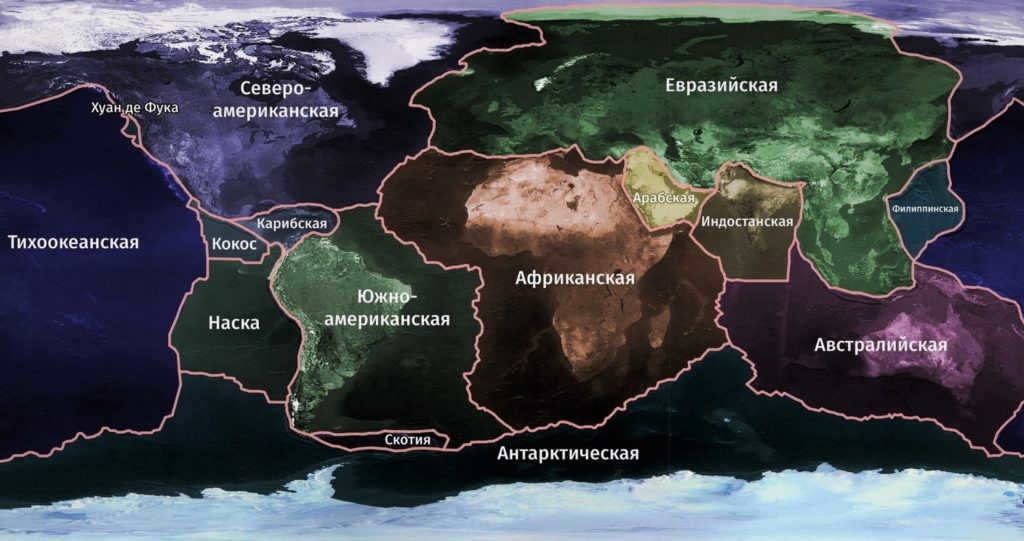
The formation of surface relief is typically a result of both internal and external processes occurring over an extended period of time. These processes, often referred to as “relief-forming agents,” play a crucial role in shaping the Earth’s surface.
To facilitate the study of relief, researchers have categorized it into different levels based on the various surface features present.
Primary relief
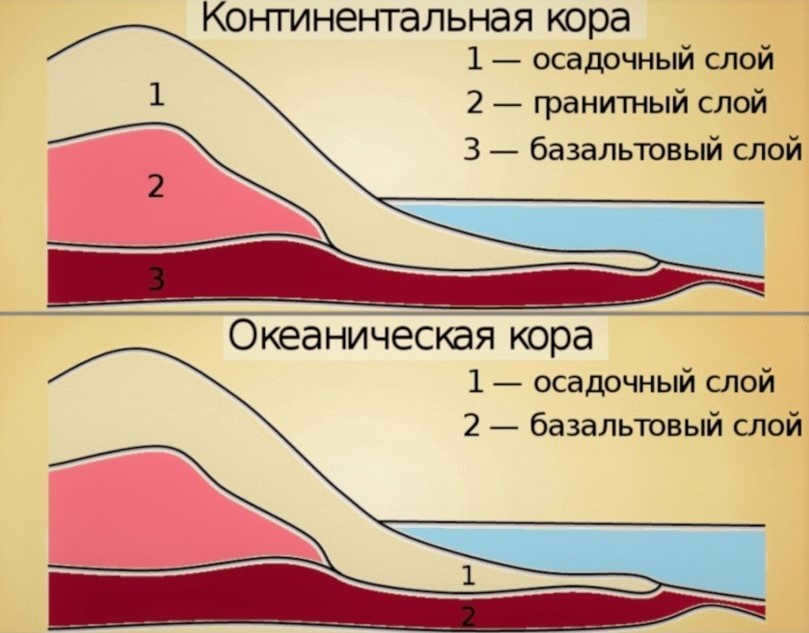
The initial tier encompasses the continental and oceanic crusts, which together constitute the lithosphere. The continental crust comprises aluminum, silica, and granite, while the oceanic crust is composed of magnesium and basalt. The topography of this primary level took shape through the gradual cooling of the Earth’s crust during its formative stages.
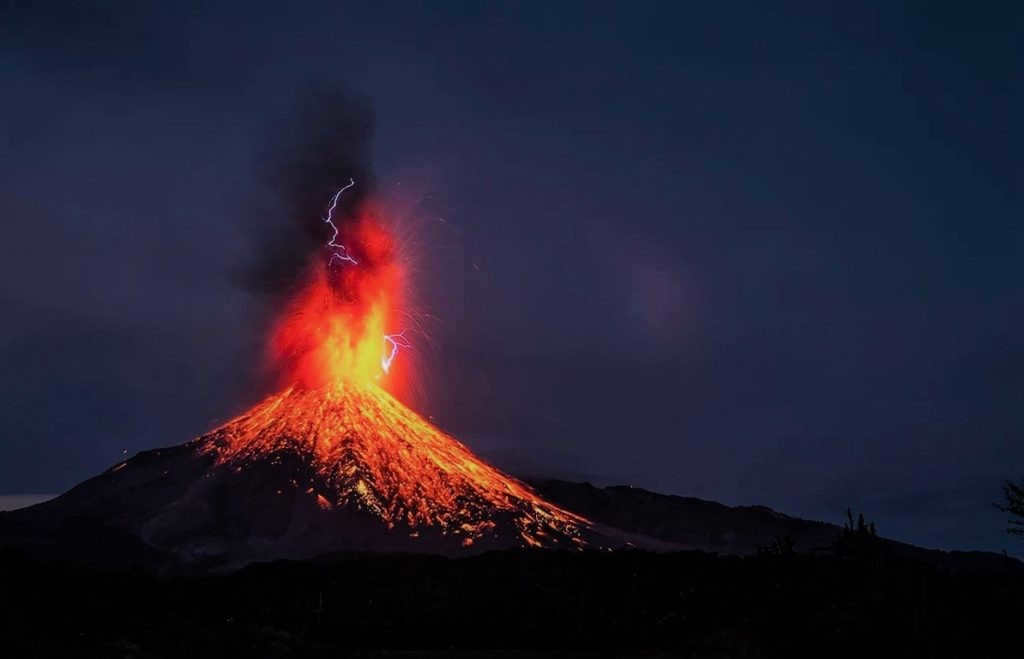
This level of relief has emerged as a result of internal forces that take place beneath the planet’s surface. These forces play a significant role in altering the planet’s appearance. There are three primary internal forces: volcanic activity, seismic activity, and crustal movements, which cause the deformation of the landscape. Mountains and underwater trenches are the observable outcome of these processes.
Relief at the third level
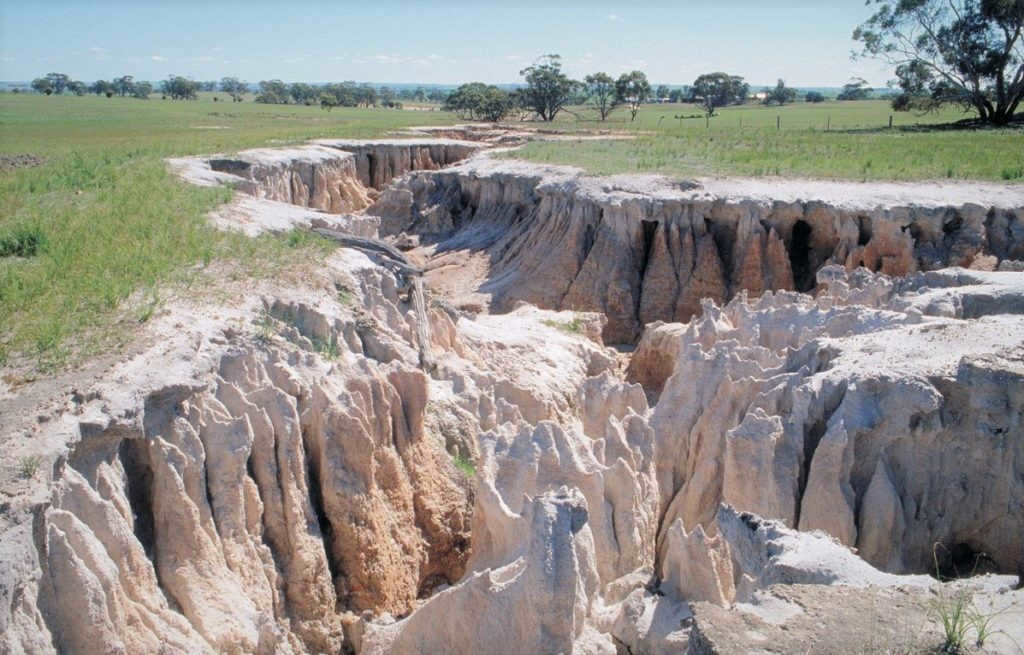
The formation of this type of relief is a result of external processes that take place on the Earth’s surface. These forces work together to create a balanced landscape. External processes include the deposition, erosion, and transportation of soil. They are caused by wind, the movement of glaciers, the flow of groundwater, and flowing water.
Fascinating fact: the third level relief is only found on land and is not present in bodies of water.
The characteristics of relief can be classified into various categories according to elevation, orientation, rock structure, slope, and soil composition. These categories encompass a wide range of landforms such as mountains, plains, valleys, ridges, berms, rivers, seas, oceans, volcanoes, islands, and more. Furthermore, it is worth noting that irregularities in the underwater landscape are also regarded as distinct elements of relief.
Principal landforms
The topography of the planet’s crust is classified into various principal forms, each with distinct characteristics.
Continents and seas
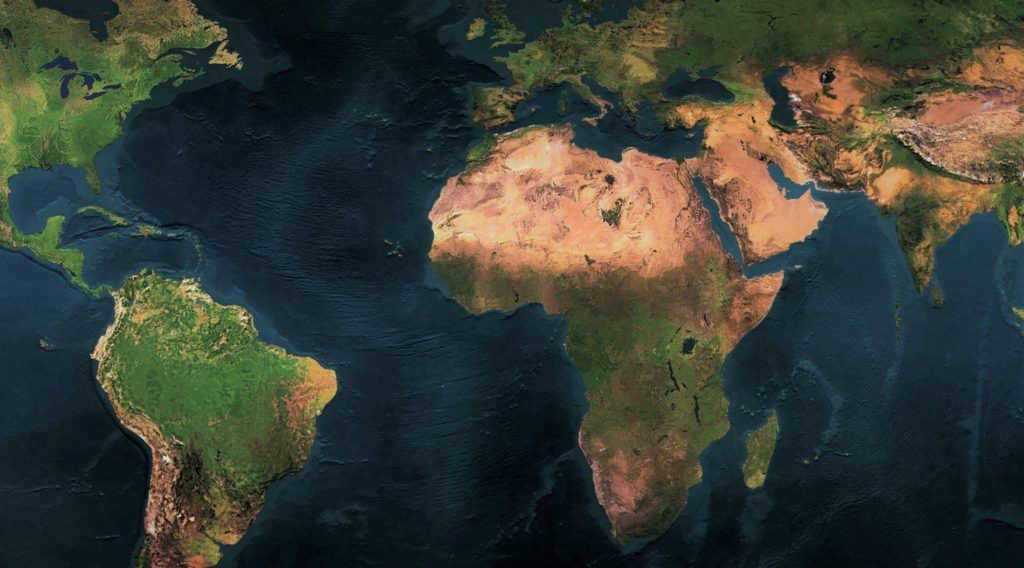
These are the primary landforms on Earth, which are created by planetary, cosmic, and tectonic processes. The continents are the largest features on the surface and are made up of three layers: basaltic, granitic, and sedimentary. The average depth of these landforms ranges from 35 to 45 kilometers. In the case of continents, most of the surface is located above the water level of the World Ocean.
Fascinating fact: The planet has the following continents: Eurasia, Antarctica, Australia, South and North America, and Africa.
Mountains and plains
The combination of mountains and plains creates a diverse and breathtaking landscape. The towering peaks of the mountains contrast with the wide open spaces of the plains, offering a unique visual experience. The mountains provide a sense of majesty and grandeur, while the plains offer a sense of vastness and tranquility. Together, they create a harmonious balance of natural beauty. Whether you prefer the challenge of climbing mountains or the serenity of exploring the plains, this landscape has something for everyone to enjoy. So, pack your bags and embark on an adventure through these awe-inspiring mountains and plains.
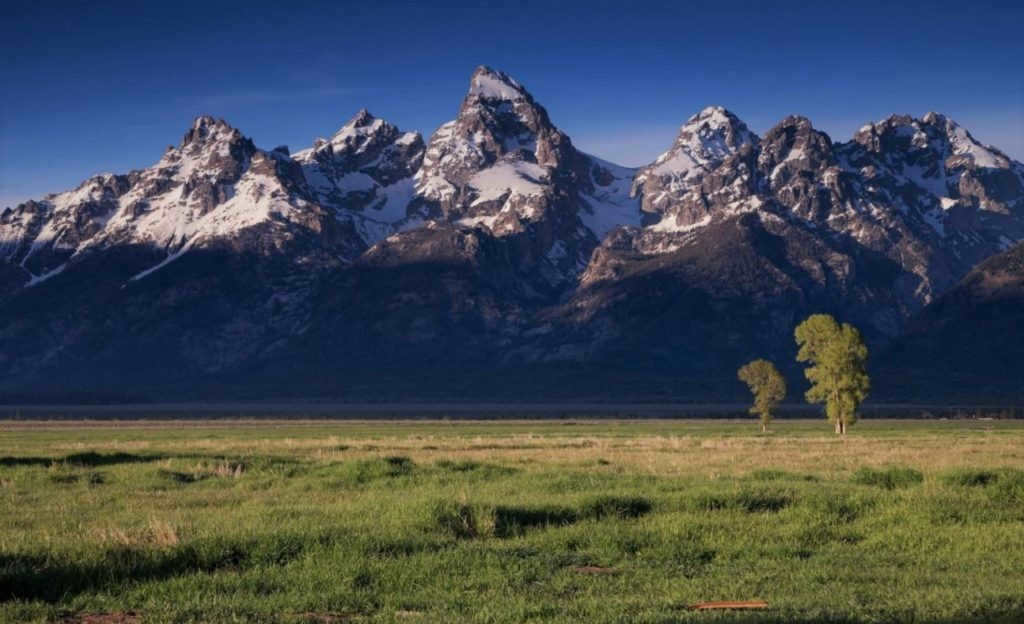

Mountains and plains are regarded as the primary geographical features of the Earth, alongside continents and oceans. The formation of mountains and plains is a consequence of tectonic processes that take place within the Earth’s interior. As a result of the movement of the Earth’s crust, elevated areas of varying heights are created in specific regions. Conversely, plains emerge in areas with reduced tectonic activity.
Mountains are referred to as regions of land that are 500 meters above sea level and higher. Areas from 500 m to 1 km are categorized as low. If a mountain has a height between 1 and 2 km, it falls under the medium category. High mountains are elevations of 2 km or more. On maps, mountains are typically depicted in varying colors, ranging from yellow to dark brown, depending on their elevation.
Fascinating fact: The tallest mountain on Earth is Mount Everest, also known as Jomolungma. It towers 8,848 meters above sea level.
Plains, on the other hand, are expansive land areas with a flat surface or minor elevations. These landforms are situated within the range of up to 500 meters above sea level. As the elevation approaches this threshold, it transitions into a plateau. If a plain is located below sea level, it is classified as a depression.
Geomorphology has a key objective of precisely determining the age of the landforms in various regions of the Earth. This characteristic represents the period of time in which the final appearance of these areas was shaped through various processes.
Two types of ages are identified in geomorphology: relative and absolute. Absolute age refers to the number of years that have elapsed since the initial formation of the landscape. To obtain an accurate value, techniques such as paleomagnetic and radioisotope methods are employed. On the other hand, relative age is used to compare different sites and determine which one formed earlier or later.
Methods of illustrating elevation
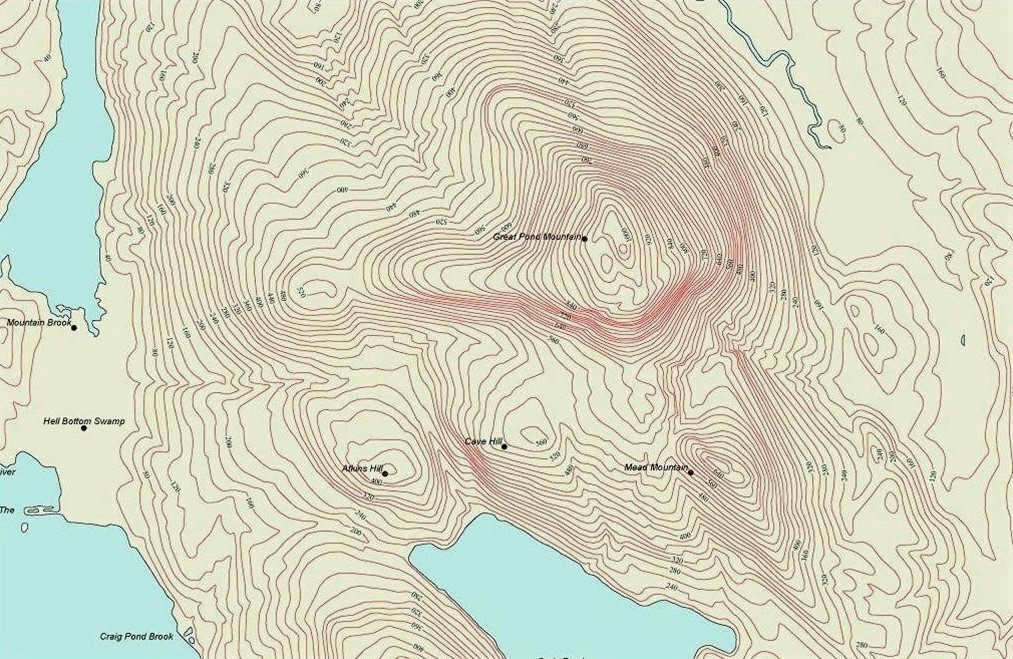
Isohypses are employed for the depiction of elevation on expansive topographic charts. These lines are characterized by numerical values and symbols. On charts with a diminished scale, varied types of elevation are indicated through distinct hues. As an illustration, deserts are depicted in yellow, plains in green, and mountains in brown.
The significance of relief
The examination of the surface topography holds great importance for humans, leading them to explore and gather extensive information. The significance of relief can be attributed to various factors:
- Studying the land helps determine its suitability for human settlements.
- Collecting information about the landscape aids in understanding its agricultural potential.
- Familiarity with the terrain is crucial for battle and troop maneuver planning.
- Investigating the topography assists in mapping water flow and identifying the presence or absence of inland water bodies.
- The features of the land can influence weather patterns, as elevations can obstruct wind and precipitation.
- Knowledge of the area is essential for low-altitude flying and navigation.
- The operation of navigation systems and radars can be influenced by the characteristics of the terrain, therefore it is important to carefully select the terrain where they will be located.
Considering these factors, individuals make an effort to monitor all alterations on the Earth’s surface and promptly update the overall data. Although large-scale maps may remain unaltered for extended periods, detailed plans of smaller regions undergo regular changes.
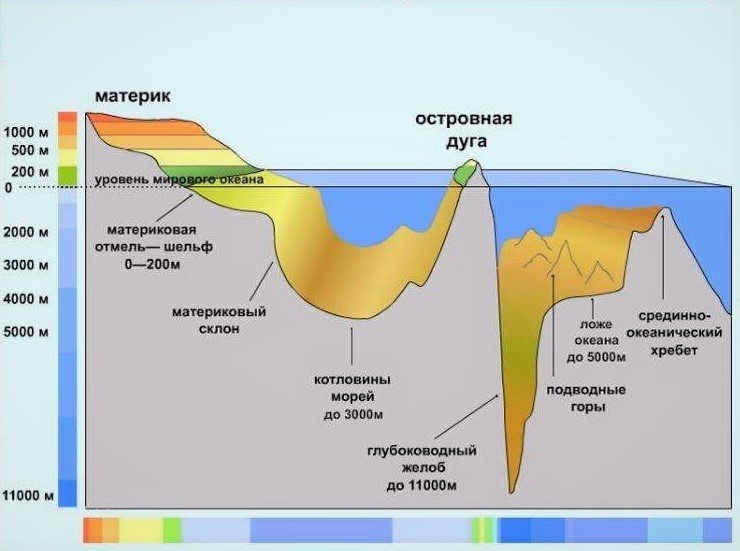
The altitude of a region is a characteristic that indicates the vertical distance at which the highest point of an object is situated in relation to the average sea level. The average sea level can vary over time due to factors such as wind, currents, precipitation, climate, and others. As a result, the current altitude of an object may differ from previous measurements. To measure the depth in bodies of water, the difference between sea level and the farthest point from sea level is utilized. Each country utilizes a specific body of water as a reference point, with sea level being measured against it.
Fascinating fact: In the CIS territory, the height of objects is measured based on the level of the Baltic Sea. This is accomplished using a specialized device known as the “Kronstadt Footstick.”
An intriguing video on the topic of relief
In the event that an error is discovered, kindly select the relevant text fragment and then press Ctrl+Enter.

The Earth’s surface can be defined as the outermost layer of the planet that serves as a protective shell. It is the solid ground that we walk and drive on every day. However, this definition is only in a literal sense. In reality, the Earth’s surface encompasses various layers that make up the planet.
Similar to other planets in the Earth group, our planet is composed of different inner layers:
What sets Earth apart from other planets is the presence of its atmosphere.

What does the Earth’s surface consist of?
The Earth’s surface consists of several components, including the biosphere, hydrosphere, lithosphere, crust, and lower atmosphere.
The hydrosphere encompasses all of the planet’s water reserves, while the biosphere is the living shell where organisms thrive.
Lithosphere
The lithosphere is the solid outer shell of the Earth, composed of the crust and upper mantle. It serves as a protective layer, shielding the planet’s inner core from the intense heat. Below the lithosphere lies the asthenosphere, a region of the mantle with reduced seismic wave velocity and a consistency similar to hot, viscous liquid.
The lithosphere is known for its solid state, but it is also mobile, which impacts the overall shape and form of the planet. However, these changes occur at a slow pace and may not be easily noticeable within a single generation.
The thickness of the lithosphere can range from ten to several hundred kilometers.
Within the lithosphere, there are lithospheric plates, which are large blocks capable of movement. These movements lead to changes in the Earth’s surface and topography.


What is Earth’s crust?
In actuality, the Earth’s crust represents just the uppermost boundary of the solid surface that lies above the mantle. In the middle, there is a significant increase in the speed of seismic waves. This zone is known as the Mohorovicich boundary.
The Earth’s crust is a relatively thin layer of the planet’s surface, extending to approximately 130 km below sea level. It possesses the most diverse chemical composition compared to other layers of the Earth, with oxygen and silicon being the most abundant elements.
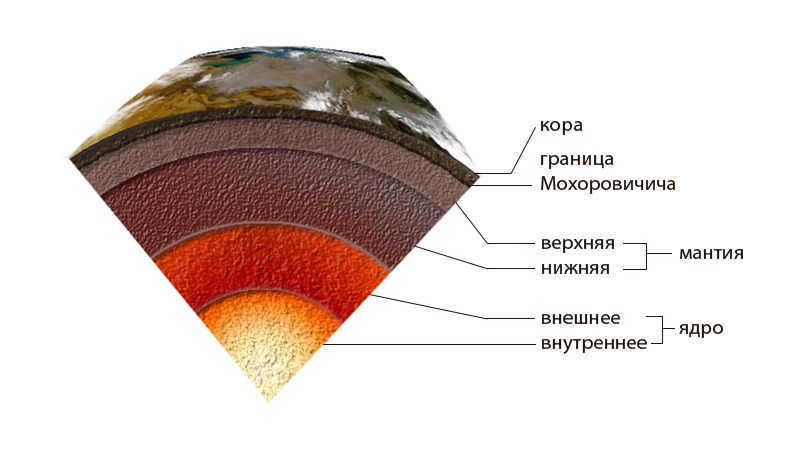

Differentiating between two types of crust
Initially, there is the continental or continental crust. Its thickness can range from 35 to 45 km, but it is also capable of reaching up to 75 km. This crust forms the surface of the continents and is made up of three layers:
On the other hand, there is the oceanic crust, which is situated beneath the oceans. In contrast to the continental crust, it has a thickness ranging from 5 to 10 km and is composed primarily of sedimentary and basaltic layers.
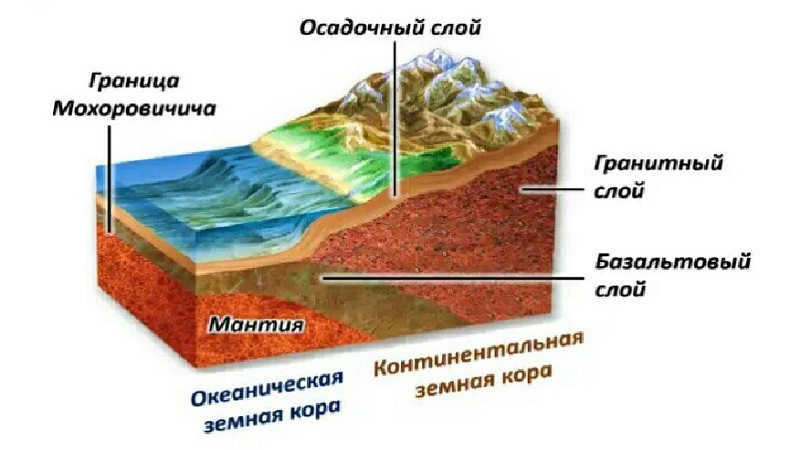
The Earth’s Surface Temperature
Scientists have determined that the temperature of the Earth’s surface can vary widely, ranging from as low as -89.2°C to as high as +56.70°C. However, the average temperature is a more moderate 14.8°C. It’s important to note that these values can greatly differ depending on the specific location and environmental conditions. Generally, the deeper you go into the Earth’s surface, the warmer it becomes.
There are several factors that influence the temperature of the Earth’s surface. As previously mentioned, the thickness and depth play a significant role. Additionally, the Earth’s surface is heated by solar radiation, which warms the planet and its upper layers. Furthermore, internal factors also contribute to the warming of the Earth’s surface. For example, various tectonic, physical, and chemical processes can influence the temperature.
Acceleration of gravitational force on Earth’s surface
As taught in schools, the acceleration experienced by an object in free fall (when it is subject to the force of gravity in space) is known as the acceleration of free fall.
While the acceleration due to gravity on Earth’s surface is commonly considered to be a constant value of 9.81 m/s2, this only holds true for a latitude of 45.50 above sea level. It’s important to note that this is an average value and can be used to solve simple problems.
However, for precise calculations at a specific location and time, factors such as latitude and altitude above sea level need to be taken into account. By considering these variables, a more accurate value for the acceleration of free fall can be obtained.
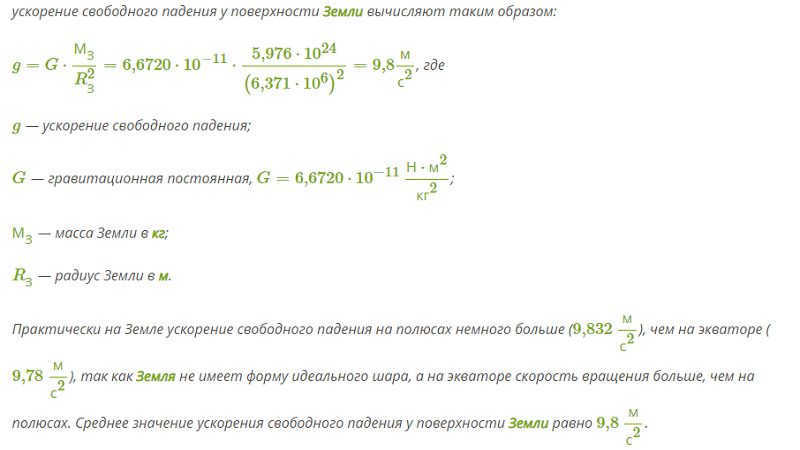
It is important to note that due to the Earth’s rotation, its shape is similar to a flattened ellipsoid. More precisely, it resembles a geoid, which is an ellipsoid with a larger equatorial diameter compared to the polar diameter.
When performing calculations related to the Earth’s rotation, it is necessary to take into account the centrifugal acceleration. In simple terms, this refers to the balance of forces acting on everything as a whole.
As evident, the Earth’s surface is complex and diverse, influenced by numerous factors. Its conditions and properties differ significantly from those of other planets. It is these distinct qualities that make our blue home unique and suitable for human habitation.
One of the primary layers of the Earth, known as the Lithosphere, consists of three components: the crust, mantle, and sedimentary rocks. The lower portion of the Earth’s shell is characterized by a significant decrease in rock viscosity. The thickness of the Lithosphere ranges from 25km to 200km on land and from 5km to 100km in the oceans.
The Earth’s crust makes up approximately 1% of the planet, with a thickness that varies from 40 to 80 km on land and up to 10 km in the ocean.
The elements that compose the Earth’s crust include:
- Oxygen
- Silicon
- Hydrogen
- Aluminum
- Iron
- Magnesium
- Calcium
- Sodium
These elements account for 99.5% of the total mass of the shell.
On the Earth’s crust, there are three layers of rocks in continental conditions:
On the other hand, in oceanic conditions, the Earth’s crust consists of only two layers since there are no granitic rocks. The upper layer of the lithosphere, which includes the continental plains and the ocean floor, is the main part. Ignoring the oceanic conditions, about 95% of the Earth’s crust is composed of igneous rocks.
The lithosphere is a crucial source of mineral resources, making it an important target for anthropogenic activities. Unfortunately, these activities have led to an ecological crisis on our planet.
Soil, located on the Earth’s crust surface, is considered one of the most valuable resources for humans. Its thickness can vary from 15 cm to 3 meters, depending on the continent.
- flammable minerals,
- metal minerals,
- building materials,
- industrial raw materials
Processes (shifts, collapses, erosion) occurring in the upper layer of the earth’s crust not only impact the planet’s ecological situation but can also result in global disasters.
The upper layer of the Lithosphere is composed of relatively stationary platforms. The older platforms are situated in the central part of the continent, while the younger ones are located on the sides. The mountainous region is formed through the collision of tectonic plates on the continent, whereby one plate collides with another, resulting in the formation of this region. The Lithosphere is comprised of 14 tectonic plates:
- The Pacific Plate, considered the largest on the planet.
- The Eurasian Plate, which encompasses the majority of Eurasia
- The South American plate, which spans the South American continent and extends into the Atlantic Ocean
- The North American plate, which covers the North American continent and the northeastern portion of Siberia
- The African Plate, which covers the entirety of Africa and partially extends into the Atlantic and Indian Oceans
- The Antarctic plate, which is located beneath Antarctica
Unique Report #2
Understanding the Lithosphere
Composition
The lithosphere consists of two components: the Earth’s crust and the upper mantle.
The lithospheric plates, which make up the lithosphere, are in constant motion, leading to changes in the Earth’s surface. The ongoing process of plate tectonics involves the collision, sliding, and subduction of these plates. As a result, continents gradually shift, giving rise to mountains, valleys, and various landforms. The concept of continental drift was initially proposed in 1912 by Alfred Wegener, a German geophysicist and meteorologist.
The Earth’s crust can be differentiated into distinct layers, exhibiting variations under continents and oceans.
There are three layers in the Earth’s crust:
- The upper layer consists of sedimentary rocks.
- The middle layer is granitic, composed of granite and altered rocks.
- The lower layer is basalt, which contains even denser rocks. The oceanic type of Earth’s crust does not have a granitic layer.
The significance of the lithosphere in human life
We have direct interaction with the lithosphere, as it is the area where humans reside.
We utilize the resources of the Earth’s crust by extracting minerals that are used in various industries such as construction, crafts, technology, agriculture, and more. Mining has been one of the oldest occupations of humanity. Some countries heavily rely on fossil fuel extraction.
We also cultivate plants in the soil, the uppermost fertile layer of the Earth’s crust, and without agricultural production, humans would not survive, as it is the primary source of sustenance.
In general, all of our activities take place on the lithosphere, so to say that it plays a vital role in our lives is an understatement.
The lithosphere is host to various natural phenomena that greatly complicate human life, such as earthquakes, landslides, and volcanic eruptions. However, despite these challenges, the significance of the lithosphere for mankind cannot be overstated, as our very existence would be impossible without it.
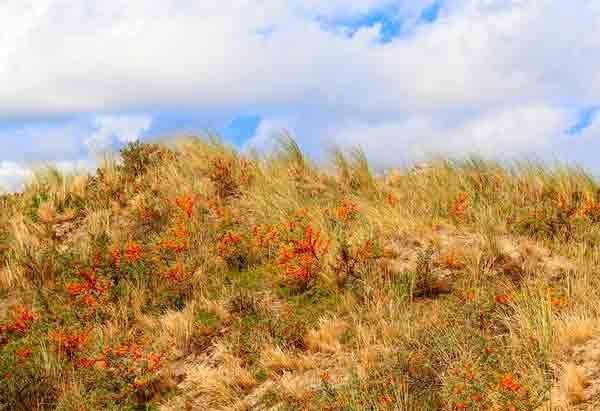
Art has always been an integral part of our lives and continues to hold significance in contemporary society. Throughout history, various forms of art have emerged, including painting and sculpture. These artistic expressions allow individuals to convey their emotions, ideas, and perspectives in unique and creative ways.
Furthermore, gymnastics has gained immense popularity as a sport, attracting both boys and girls. Engaging in regular physical exercises is crucial for maintaining good health and an active lifestyle. By participating in gymnastics, individuals can enhance their strength, flexibility, and overall fitness levels.
When it comes to behavior and habitat, porcupines were first discovered in North and South America. These fascinating creatures are known for their remarkable climbing abilities and spend a significant amount of time in trees. Some species even possess tails specifically designed to assist them in their climbing endeavors.

A geographic map is a representation of the Earth’s surface on a flat plane, created to reflect the Earth’s spherical shape, but in a reduced and symbolic form.
When defining a geographic map, it is important to note four key characteristics: the map is a scaled-down representation, it utilizes conventional symbols, it takes into account the scale, and it considers the spherical nature of our planet.
Scale refers to the ratio that demonstrates the relationship between the size of objects on a map or drawing and their actual size in reality.
Website blueprint
A site plan is a visual representation that depicts a small area in intricate detail, but in a reduced scale using symbolic representations.
Essentially, a site plan can be described as a more zoomed-in geographical map. In other words, it showcases larger elements like forests, deserts, or cities. This serves as the primary distinction between a map and a site plan.
The key disparity between a map and a site plan lies in the scale. Maps have a finer scale and also consider the Earth’s curvature, whereas site plans do not.
How are these types of representations of the Earth’s surface similar?
First and foremost, both a topographic plan and a geographic map share the commonality of being constructed according to the same set of rules and utilizing a scale.
Globe
A globe is a reduced-scale model of the Earth’s surface, depicting the continents and oceans.
The creation of the first globe is credited to the German geographer Martin Beheim during the late 15th century. This historic globe is currently preserved and exhibited at the Nuremberg City Museum in Germany.
While a globe offers the advantage of minimal distortion in its representation of the world, it also has its drawbacks. For instance, measuring distances accurately using a globe is more challenging compared to using a ruler.
Undoubtedly, creating a globe necessitates the reduction of geographical objects in scale. Typically, globes are scaled at 1:50,000,000, meaning that 1 centimeter on the globe represents 500 kilometers in actuality. All objects on the globe are uniformly scaled down by the same factor.
Due to this diminutive size, minor features like residential neighborhoods, springs, or meadows, for instance, cannot be portrayed on a globe.
Aerial and space photography
The popularity of aerial photography and space imagery is on the rise. Aerial photographs have been around since the early 1900s, coinciding with the emergence of aviation. These photographs offer comprehensive details about specific geographic locations.
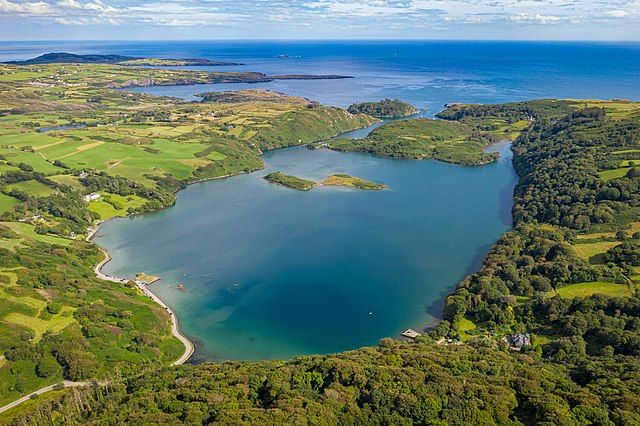
An aerial photograph captures the view of a specific area taken from an airplane or another aircraft.
In the present times, the majority of our Earth-related data is obtained from space. Earth’s surface is extensively photographed by numerous artificial satellites that are positioned in orbit around the planet.
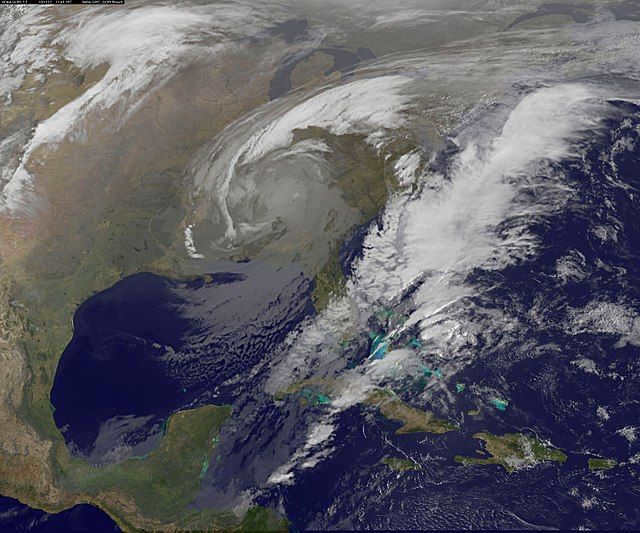
The images received are computer processed to obtain photos that are of very high quality and easy to read. This feature is extremely convenient as, previously, individuals had to possess the ability to decipher maps obtained from space imagery in order to understand them.
| Terrain plan | It provides a clear visualization of even small objects, making it easier to calculate object sizes and distances. It also aids in ground navigation. | The scale is too large, limiting the representation of a large area. |
| Geographic map | It utilizes symbols that convey a wealth of information, including relief, country boundaries, and minerals. Maps can also be used for measuring distances. | Maps (especially small-scale ones) suffer from distortions. The most visually accurate representation of the Earth is a globe. |
| Space imagery | Space images provide real-time monitoring of Earth changes, such as glacier melting. They can also be used for studying weather phenomena. | However, space imagery is highly dependent on weather conditions. If there are clouds or cyclones, the Earth will be obscured, rendering the image meaningless. |
What areas of science and technology are utilized by contemporary cartographers?
The field of geography is closely intertwined with various other scientific disciplines. As a result, cartographers rely on knowledge from a range of fields to create accurate and informative maps. One crucial area is mathematics, as the scale of a map requires precise mathematical calculations. Furthermore, cartographers frequently employ IT technology to develop online maps, which are becoming increasingly popular among the general public.
The majority of the Earth’s surface is covered by water, accounting for 70% of its total area. The remaining 30% is allocated to the seven continents. Beneath the water, there is a thriving ecosystem of underwater vegetation and mud. The outer layer of the Earth is composed of a solid and rocky crust, which formed billions of years ago through the cooling of lava. This crust is divided into several large tectonic plates that constantly shift and move in relation to one another. It is during the collision of these plates that mountain ranges are formed. It is fascinating to note that many of the terrestrial features we are familiar with today are a result of the movement of these tectonic plates, which shift approximately 25-100 mm per year. Approximately 250 million years ago, the Earth was predominantly one large continent. To gain a better understanding of the Earth’s surface structure, you can refer to the accompanying photo depicting all the different layers.
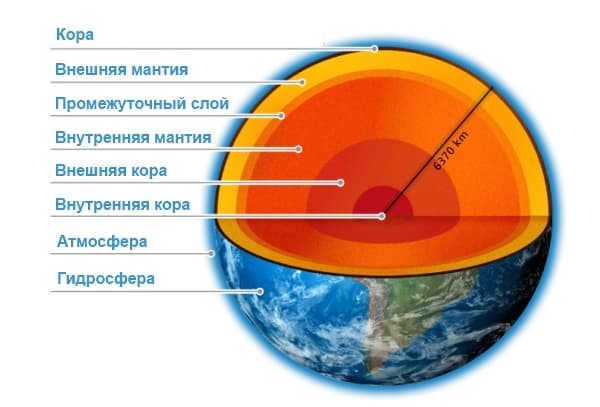
The outermost layer of the Earth, known as the crust, is composed of aluminosilicates and is divided into the continents and ocean basins. The thickness of the crust varies, with the continental crust ranging from 35-70 km and the oceanic crust ranging from 5-10 km. Despite its relatively small volume, making up only 1% of the Earth’s total volume, the crust plays a crucial role in the planet’s dynamics.
As one delves deeper into the Earth’s crust, the temperature gradually increases. Starting off cool, the temperature can reach up to 400°C at the boundary between the crust and the mantle. This temperature gradient is significant and contributes to various geological processes.
Below the crust lies the mantle, which is composed of solid rock. The mantle is responsible for transferring heat from the Earth’s core to the surface, and its movements play a key role in the formation of tectonic plates.
The Earth’s tectonic plates are mobile due to their ability to float on the molten asthenosphere, which lies beneath the mantle. It is at the boundaries of these plates where mountains are formed, volcanic activity occurs, and earthquakes take place. The movement of the plates is primarily driven by the strong lithosphere, which is the rigid outer layer of the Earth’s crust and uppermost mantle.
Overall, the Earth’s crust and mantle interact in complex ways, shaping the planet’s surface and influencing geological phenomena such as plate tectonics, volcanic activity, and seismic events.
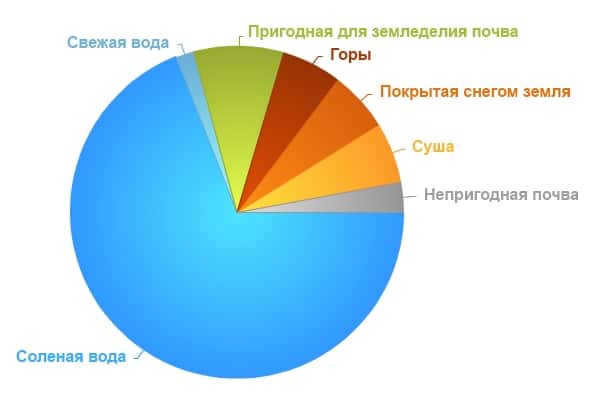

The Earth’s surface appears to be a constant and unchanging feature to us. However, it is important to acknowledge that there is a whole world beneath our feet, teeming with life. We only become aware of this hidden world during moments of volcanic eruptions or seismic activity. Our website offers a fascinating collection of photographs showcasing various locations on Earth, both from its surface and from outer space.

The Earth’s lithosphere is a solid outer shell that encompasses the entire planet and provides protection from the extreme temperatures of the planet’s core. It is important to understand the composition and characteristics of the lithosphere in comparison to other celestial bodies.
General characteristics
The lithosphere is the outermost layer of the Earth, bordering the hydrosphere and atmosphere above, and the asthenosphere below. Its thickness varies significantly, ranging from 10 to 200 km in different parts of the planet. It is worth noting that the lithosphere is thicker on the continents compared to the oceans. Unlike the hydrosphere and atmosphere, the lithosphere is not a single entity, but rather consists of separate plates that rest on the asthenosphere and slowly move across it. There are seven major lithospheric plates and several smaller ones. The boundaries between these plates are characterized by zones of seismic activity, where earthquakes and volcanic activity are common. In the territory of Russia, two such plates meet and interact – the Eurasian plate and the North American plate. The structure of the Earth’s lithosphere can be divided into three layers:
Now, let’s examine each layer in more detail.
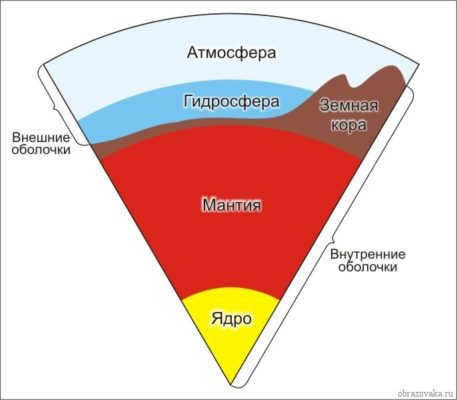
Crust of the Earth
This layer is known as the lithosphere’s upper and thinnest layer. It constitutes only 1% of the Earth’s total mass. The Earth’s crust has a variable thickness, ranging from 30 to 80 kilometers. Areas with lower elevation tend to have thinner crust, while mountainous regions have thicker crust. Two types of crust exist on Earth – continental and oceanic.
The crust is unique to Earth, as other planets have a different type of crust.
The continental crust can be divided into three layers:
which should be read in conjunction with this one

- The sedimentary layer is formed by sedimentary and volcanic rocks;
- The granitic layer is formed by metamorphic rocks such as quartz and feldspar;
- The basaltic layer is formed by igneous rocks.
Only sedimentary and basaltic layers are found in the oceanic crust.
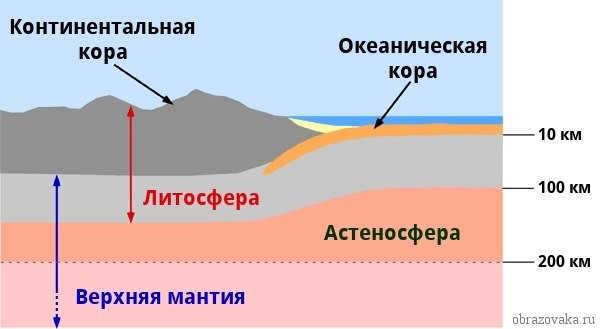
Figure 2. The composition of the Earth’s crust differs between the oceanic and continental crusts.
Within the Earth’s crust, there is a wide variety of minerals, metals, and chemicals, each present in different amounts. The elements that are most commonly found include:
- Oxygen
- Iron
- Silicon
- Magnesium
- Sodium
- Calcium
- Potassium
The complete rejuvenation of the Earth’s crust takes place over a period of 100 million years.
The Mohorovicich surface: Exploring the boundary layer
Referred to as the Mohorovicich surface, the boundary layer is a fascinating zone characterized by a sudden surge in seismic wave velocity. Not only that, but it also showcases a noticeable change in the density of the lithosphere substance, rendering it more elastic. Situated at a depth ranging from 5 to 70 km, the Mohorovicich surface intricately mirrors the topography of the Earth’s crust.
Figure 3. The Mohorovičić surface diagram
The Mantle
The lithosphere only includes the upper portion of the mantle, which has a thickness ranging from 70 to 300 km. What processes take place within this layer? This is where seismic activity, such as earthquakes, originates. This is attributed to the higher speed of seismic waves in this region. What is the composition of this layer? It is primarily composed of iron, magnesium, calcium, and oxygen.
What are the key takeaways?
The Earth’s lithosphere is structured in layers, consisting of the Earth’s crust and the upper portion of the mantle. The Mohorovicich surface serves as the boundary between these layers. The lithosphere has a total thickness of approximately 200 km and contains a wide range of metals and trace elements.
EARTH, the third farthest planet from the Sun in the Solar System, is the biggest among the planets in the Earth group, which comprises of Mercury, Venus, and Mars.
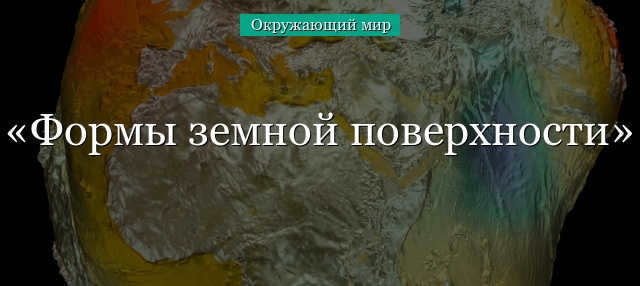
In earlier eras, individuals examined the formations of the Earth’s exterior within their natural surroundings. As geographical discoveries emerged, their understanding of the world expanded. Humans began to take flight and witnessed the unevenness of the globe’s surface. It consists of depressions and elevated regions, as well as flat and mountainous areas. In this article, we will explore the different forms of the Earth’s surface and their respective names.
Configurations of the earth’s surface
The arrangement of irregularities on the globe’s surface is referred to as relief. Relief features delineate specific entities on the planet’s surface and are juxtaposed with the global sea level.
- The most prominent configurations can be observed from outer space. These include the oceanic trenches and the landmasses protruding above the water.
- Continents host mountainous regions as well as vast plains. Oceans also possess depressions, plains, and mountains. Some mountains rise above the oceanic level, forming islands and archipelagos.
- Plains exhibit various features such as elevations, hills, ravines, and depressions that are filled with water (lakes). Mountainous regions encompass solitary peaks, elongated mountain ranges comprised of multiple summits, and gorges nestled between the ridges.
Earth’s Surface Varieties
The Earth’s surface varieties (also known as relief varieties) indicate the characteristics of the surface. Let’s briefly outline the primary categories of relief: flat, undulating, mountainous.
The flat terrain can be found either below or above sea level. The plains above sea level consist of lowlands (0-200 m), uplands (200-500 m), and plateaus (above 500 m). The plains below sea level include the Caspian lowland and oceanic plains.
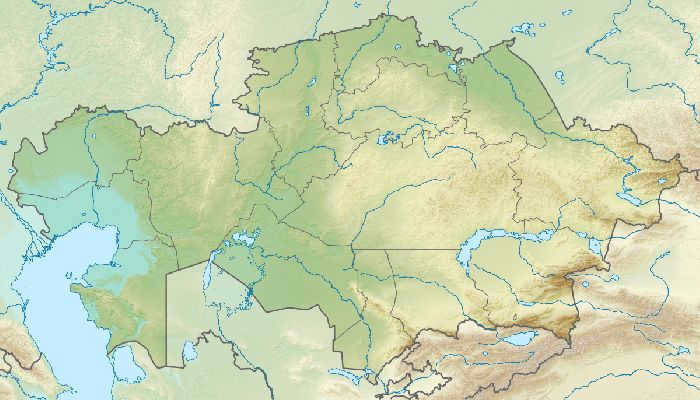
Figure 2. The Caspian lowland.
The hilly landscape can feature depressions, gullies, hills, and terraced forms.
The mountainous terrain consists of mountain ranges, individual mountains, river valleys, and gorges. The slopes of the mountains are steep, and the river valleys have rocky banks.
The different types of terrain are significant for military operations, construction projects, and are taken into consideration when planning roads and designing landscapes.
Putorana Plateau: A Unique Geological Wonder
The Putorana Plateau, located in the northwestern part of the Central Siberian Plateau, is a remarkable geological formation. Standing tall with its highest point reaching an elevation of 1701 meters, this plateau is a sight to behold. Its rugged beauty is defined by steep escarpments on the northern and western slopes, while the eastern and southern parts showcase more gentle and undulating terrain.
What makes the Putorana Plateau truly special is its status as a protected nature reserve and a UNESCO World Heritage Site. Preserved for its unparalleled natural wonders, this plateau is a testament to the Earth’s ancient history and geological processes.
The Putorana Plateau originated from basalt lava that erupted approximately 250 million years ago. Over time, as the landmass underwent tectonic movements, the lava layers fractured and created fissures that were subsequently filled with water. This led to the formation of rivers and lakes, transforming the once molten surface into a stepped plateau. Magnificent waterfalls cascade down these steps, with the highest waterfall measuring an astounding 482 meters. Moreover, the plateau boasts an impressive collection of over 22 thousand lakes, each with its own unique charm and allure.
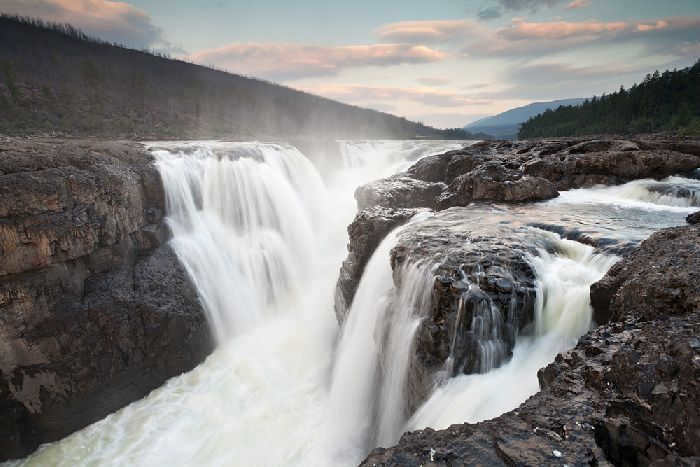
Figure 3 illustrates the magnificent waterfalls found on the Putorana plateau.
The Putorana plateau’s surface is characterized by a polar desert environment. During winter, temperatures can plummet to as low as -50-68 °C, while summer temperatures range from +16-20 to +30 °C. The polar day lasts for 74 days, while the polar night lasts for 31 days. The snow cover remains until mid-June, and winter arrives by the end of September.
What Did We Discover?
The planet’s relief is defined by various forms and features of its surface, ranging from small-scale to planetary. A fascinating tale about the Putorana Plateau, for 3rd graders, serves as an excellent illustration of the concept of relief.
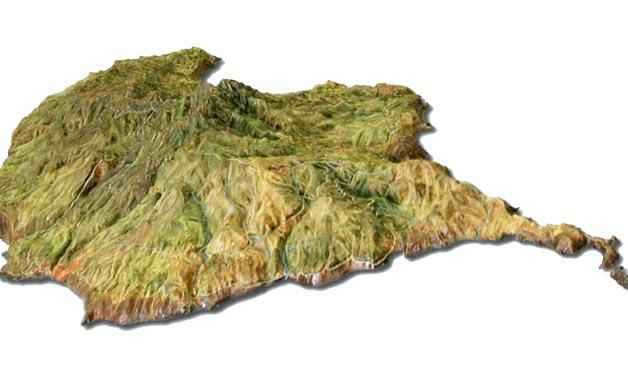
Topography refers to the various features and irregularities found on the Earth’s surface, which can vary in terms of age, development, and appearance. These features play a crucial role in shaping the landscape and influencing factors such as the ecosystem, climate, weather, and overall essence of life on our planet. In essence, topography encompasses any shape or form present on the Earth’s surface.
Earth’s Topographic Map: A Visual Representation of the Planet’s Terrain
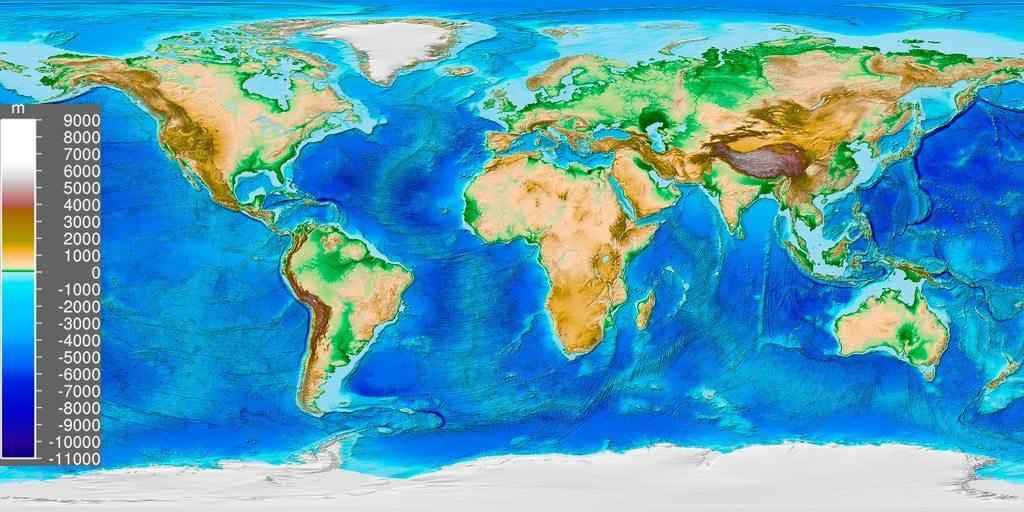
Emergence of topography
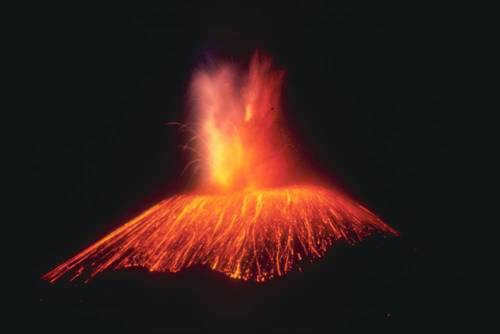
The various landforms we have today have been shaped by a variety of natural forces, including erosion, wind, rain, weathering, ice, and chemical action. These processes, along with natural disasters like earthquakes and volcanic eruptions, have contributed to the creation of the diverse landforms we observe today. Through the action of water and wind erosion, land can be gradually worn away, giving rise to distinctive features such as valleys and canyons. These processes occur over extended periods of time, often spanning millions of years.
An excellent example of this gradual transformation is the Grand Canyon in the state of Arizona, USA. Over a span of approximately 6 million years, the Colorado River has carved its way through the earth, resulting in the formation of the 446-kilometer-long Grand Canyon.
Mount Everest in Nepal holds the title of the highest elevation on Earth, with its summit towering at 8,848 meters above sea level. This majestic peak is a prominent feature of the Himalaya mountain system, which spans across multiple countries in Asia. On the other hand, the Mariana Trench, situated in the South Pacific Ocean, boasts the deepest relief on the planet, reaching a staggering depth of nearly 11,000 meters.
Significant geological formations on the Earth’s surface

Mountains, hills, plateaus, and plains are the four primary types of landforms. Minor landforms include remnants, canyons, valleys, basins, troughs, ridges, saddles, and more.
A mountain is a large landform that rises above the surrounding area, typically in the shape of a peak or mountain system. Mountains are generally steeper and taller than hills. They are formed by tectonic forces or volcanic activity, which can elevate the Earth’s surface in localized areas. Over time, mountains are gradually worn down by rivers, weathering, and glaciers. While some mountains are solitary peaks, most are part of expansive mountain ranges.
Mountains experience colder climates compared to sea level areas. The weather greatly impacts mountain ecosystems, resulting in distinct flora and fauna at different altitudes. Due to the challenging terrain and harsh climate, mountains are less suitable for agriculture and are instead utilized for resource extraction and recreational activities like mountaineering.
Olympus Mons on Mars is the tallest known mountain in the entire solar system, reaching a height of 21,171 meters.
Mountains
Mountains are a type of landform that rise above the surrounding landscape. They are characterized by their towering peaks and steep slopes.
There is no universally agreed upon distinction between a mountain and a hill, as it is largely a matter of personal opinion. However, mountains are generally considered to be taller and steeper than hills. According to the Great Soviet Encyclopedia, a mountain is defined as an elevation with a relative summit height exceeding 200 m.
A plateau is a type of landform that is elevated and flat, with steep sides that rise above the surrounding terrain. These landforms can be found on every continent and cover approximately one third of the Earth’s landmass, making them a significant feature of our planet.
There are two main types of plateaus: dissected plateaus and volcanic plateaus.
A dissected plateau is formed through the upward movement of the Earth’s crust. This elevation is caused by the slow collision of tectonic plates. One example of a dissected plateau is the Colorado Plateau, located in the western United States. This plateau has been gradually rising at a rate of about 0.3 centimeters per year for over 10 million years.
On the other hand, a volcanic plateau is formed by a series of small volcanic eruptions over time. These eruptions deposit layers of lava that gradually build up to create a flat and elevated plateau.
The Central part of the North Island of New Zealand is covered by the North Island Volcanic Plateau, which spans a large area. Within this volcanic plateau, there are three active volcanoes: Mount Tongariro, Mount Ngauruhoe, and Mount Ruapehu.
A valley is formed as river water cuts through the plateau. In the northwestern United States, the Columbia River cuts through the Columbia Plateau, which is situated between the Cascade and Rocky Mountains.
Erosion plays a role in shaping the plateau, and at times, it becomes so eroded that it fractures into smaller elevated regions.
In Central Asia, the Tibetan Plateau is the largest plateau in the world. It extends across Tibet, China, and India, covering an expansive area of 2.5 million square kilometers.
Meadows
Geographically, meadows are expansive, level surfaces of the Earth that generally have minimal variation in elevation (less than 200 meters) and a slope of less than 5 degrees. Meadows form as low-lying areas adjacent to mountain valleys, coastal regions, or small elevated areas.
Meadows are prominent geographical features found across the globe. They exist on every continent and encompass over a third of the Earth’s landmass. Meadows typically fall into the categories of grasslands (temperate or subtropical), steppes (semi-arid), savannas (tropical), or tundras (polar) in terms of biome. In some instances, deserts and tropical forests can also be classified as meadows.
Meadows encompass grassy terrains known as prairies in North America, steppes in Eastern Europe and Asia, and savannas in Australia, South and Central America, and a significant portion of Africa.
Nevertheless, not every plain consists of grasslands. A few examples include the Tabasco Plain in Mexico, which is adorned with lush forests. Forest plains boast a diverse array of trees, shrubs, and other flora.
Furthermore, deserts can also be classified as plains. One notable instance is a portion of the Sahara, the expansive desert located in North Africa, which features a predominantly flat landscape.
In the Arctic region, where the ground becomes frozen, plains are referred to as tundra. Despite the frigid temperatures, numerous animals and plants, including shrubs and mosses, manage to thrive in this harsh environment.
Characteristics of landforms
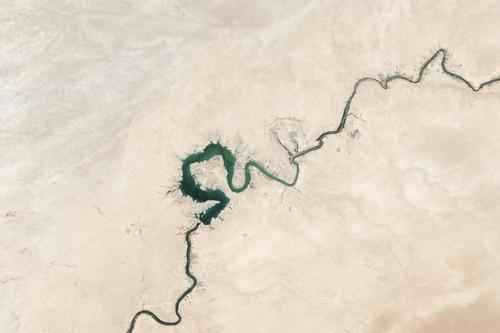
Landforms are classified based on distinct physical characteristics such as height, incline, direction, rock exposure, and soil composition. Landforms encompass various elements like berms, ridges, cliffs, valleys, rivers, islands, volcanoes, and numerous other structural and dimensional features such as ponds and lakes, hills and mountains, as well as different types of inland and oceanic bodies of water, including subsurface formations.
The constituents of individual landforms consist of lines, points, surface angles, and so on.
Categories of relief
Relief can be divided into the following categories:
Primary relief
The primary relief encompasses the entire lithosphere, which includes both continental and oceanic crust.
The continental crust is predominantly composed of granitic rock, containing high levels of silica and aluminum. In contrast, the oceanic crust is primarily composed of basaltic rock, containing silica and magnesium.
The primary relief largely represents the initial cooling and solidification of the Earth’s crust during its formation.
Relief at the second level
This particular type of relief is primarily comprised of all the internal forces that occur within the Earth’s crust. These endogenous forces are responsible for creating variations in the Earth’s surface.
Endogenous processes can be categorized into the following:
- Diastrophism – the deformation of the Earth’s crust caused by internal energy;
- Volcanism/Earthquakes.
Mountains are a prime example of the result of endogenous processes in the continental crust, while submarine ridges and trenches can be found in the oceanic crust.
This kind of topography is primarily made up of exogenous forces. Exogenous forces are forces that occur on the Earth’s surface.
All exogenous forces are responsible for leveling the Earth’s surface. The leveling process includes erosion, transportation, and deposition, which result in the formation of valleys (caused by erosion) and deltas (caused by deposition). The following natural phenomena carry out the entire equalization process:
- Flowing water (rivers);
- Wind;
- Groundwater;
- Glaciers;
- Sea waves.
Important note: none of the above phenomena operate beyond the boundaries of the coastline. This means that the relief of the third level is only limited to the continental crust.
Nevertheless, the continental margin (the region of the ocean floor located between the deep sea and the coastline) might display characteristics of tertiary relief as a result of alterations in average sea level, climatic circumstances, or regionally distinctive processes.
Elevation of the landscape relative to the sea level

The altitude of a particular area above the sea level indicates its distance from the mean sea level, which is considered as zero. This measurement is used to determine the height of a flat area or a specific feature.
The mean sea level serves as a reference point for measuring the depth and height of different locations on Earth. Sea level can be influenced by various factors such as temperature, gravity, wind, currents, and climate, which cause it to change over time. As a result, recorded elevation measurements may not always accurately represent the actual elevation of a specific location above sea level at a given time.
In the CIS countries, the Baltic Sea altitude system is used for measuring elevation. The Kronstadt Footstick, located at the mouth of the Blue Bridge in the Kronstadt district of St. Petersburg, is the instrument used for measuring the height of the Baltic Sea.
Relief Era
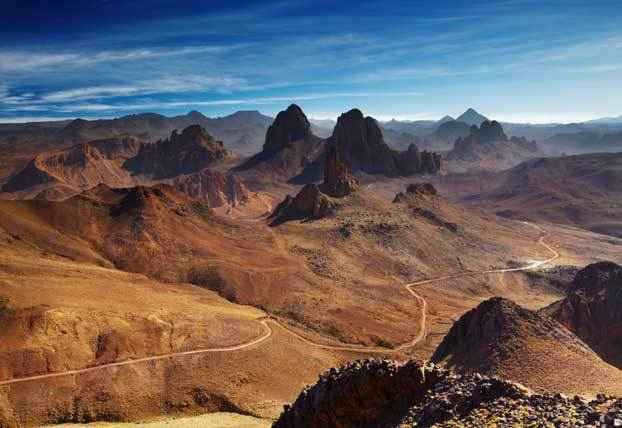
When it comes to determining the age of relief, geomorphology uses the following terms:
- The absolute age of relief is measured in terms of the time it took for a characteristic roughness to form, typically in years.
- The relative age of relief is a representation of its development up to a specific stage. In this scenario, the age of a landform can be established by comparing it to other landforms.
The importance of geological formations

Having a comprehension of landforms is essential for various purposes:
Landforms include mountains, mountain ranges, plains, hills, and ravines.
A mountain is a rugged terrain on the surface of the Earth that significantly elevates above its surroundings.
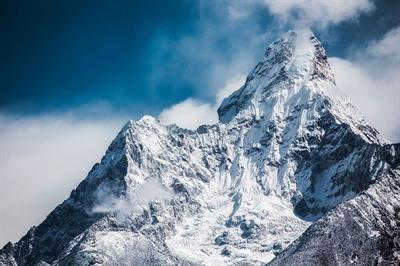
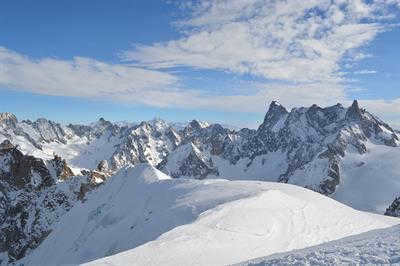
A plain is a relatively flat expanse of land on the Earth’s surface.
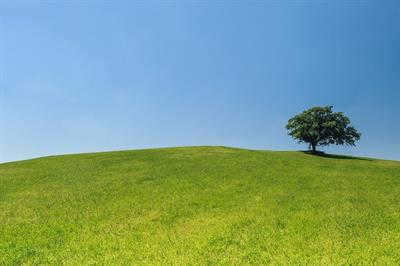
The primary formations of the Earth’s surface include plains and mountains. There are a greater number of plains than mountainous regions on our planet.
In earlier eras, individuals examined the contours of the Earth’s surface within the confines of their surroundings. As geographical explorations commenced, their understanding of the world expanded. Humans began to take flight and witnessed the unevenness of the globe’s surface. There exist low-lying areas and elevated regions, as well as flat and mountainous territories. In this article, we will explore the various shapes of the Earth’s surface and their respective names.
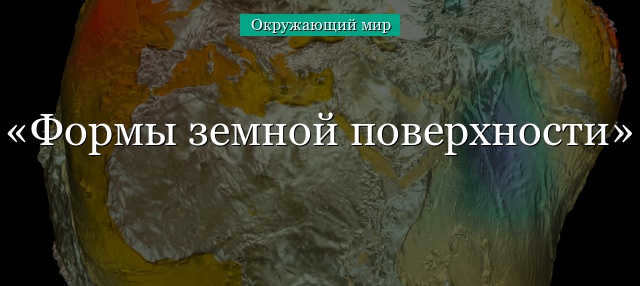
Earth’s Surface Shapes
The relief refers to the various irregularities found on the Earth’s surface. These relief forms depict specific features on the planet’s surface and are compared to the global ocean level.
- The largest shapes can be observed from outer space. These include the ocean trenches and the continents that rise above the water.
- The continents feature mountainous regions and vast plains, while the oceans have depressions, plains, and mountains as well. Some mountains emerge above the ocean surface, forming islands and archipelagos.
- Plains are characterized by varying elevations, including hills, ravines, and depressions that may be filled with water, such as lakes. In countries with mountainous terrain, there are individual mountains as well as elongated mountain ranges consisting of numerous peaks, with gorges between the ridges.
Additionally, there are also man-made forms of relief that have been created through human activity. These include quarries, dams, road embankments, canals, and reservoirs.
Categories of the Earth’s Surface
Categories of the Earth’s surface (also known as relief types) describe the nature of the surface. Let’s quickly outline the primary relief categories: flat, undulating, mountainous.
Flat terrain can be situated either below or above sea level. Plains above sea level include lowlands (0-200 m), uplands (200-500 m), and plateaus (above 500 m). Plains below sea level include the Caspian Lowland and oceanic plains.


Figure 2. The Caspian lowland.
Hilly terrain can exhibit various features such as hollows, ravines, hills, and terraces.
The mountainous landscape consists of mountain ranges, individual peaks, river valleys, and gorges. The slopes of mountains are steep, and river valleys have rocky shores.
The different types of terrain are of great importance to the military and builders, as they are taken into consideration when planning roads and in landscape design.
Putorana Plateau
The Putorana Plateau is located in the northwestern part of the Central Siberian Plateau. It reaches a maximum elevation of 1701 meters. The slopes on the northern and western sides are steep cliffs, while the eastern and southern parts have a more gradual relief.
This plateau is designated as a nature reserve and is recognized as a UNESCO World Heritage Site.
The Putorana Plateau is composed of ancient basalt lava that erupted approximately 250 million years ago. Over time, the landmass rose, causing the lava layers to fracture. These fractures then filled with water, giving rise to rivers and lakes. The original surface of the plateau transformed into a terraced landscape, with numerous waterfalls cascading down its steps, the tallest of which measures 482 meters. The plateau is also home to approximately 22 thousand lakes.

New and unique text:
Figure 3. Waterfalls found on the mesmerizing Putorana plateau.
This stunning plateau is characterized by its polar desert landscape. During the winter months, temperatures can plummet to a bone-chilling -50 to -68 °C, while summer brings more moderate temperatures ranging from +16 to +30 °C. The area experiences a polar day that lasts 74 days, followed by a polar night that spans 31 days. The landscape remains covered in snow until mid-June, and winter makes its return by the end of September.





